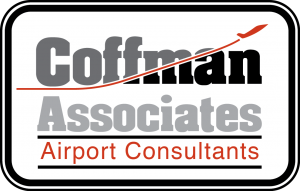Aviator Spotlight – The Wright Brothers, Fathers of Aviation
December 17, 1903, marks what is arguably the most important day in our industry’s history. On this day, 117 years ago, we learned to fly.
Wilbur and Orville Wright are considered the founders of modern aviation. Their technological breakthroughs and unmatched contributions laid the foundation for the industry as we know it today. The brothers were inseparable throughout their lives; Orville was the visionary focused on the big picture and Wilbur was the mastermind who got it all on paper, and later, into the air. They dabbled in print production and even owned a bicycle shop in their younger years, but the allure of flight was never far.
In 1891, the Wrights began the journey that would memorialize them forever. They started with the theory and mechanics of flying, learning everything they could about it. The timing couldn’t have been better. The theory of aerodynamics was relatively new, and they had experimental data from those who paved the way before them. They also had access to the newly developed internal combustion engine, an excellent conductor of energy for a flying machine.
In 1891, the Wrights began the journey that would memorialize them forever.
Wilbur wrote to a friend at the beginning of 1900, “For some years I have been afflicted with the belief that flight is possible to man. My disease has increased in severity and I feel that it will soon cost me an increased amount of money if not my life. I have been trying to arrange my affairs in such a way that I can devote my entire time for a few months to experiment in this field.”
Wilbur and Orville needed a very specific location in which to conduct their experiments, one with lots of wind, hills, and wide-open space. They arrived in Kitty Hawk, North Carolina, in September of 1900, a small town of only 300 people. It had everything they needed: steady winds, sand dunes for gliding, and plenty of land.
…steady winds, sand dunes for gliding, and plenty of land…
For the first two years, they made progress but still couldn’t get the plane off the ground. The brothers knew from studying birds that the movement of a plane would have to rely on the plane’s wings. They need to warp them, much like birds adjust or “warp” their wings with the wind. However, they couldn’t get the machine to stabilize. Orville became so discouraged after a few particularly bad failures in 1901 that he said to his brother, “Not within a thousand years would man ever fly.”
Still, they persisted. They returned to their home of Dayton to conduct more experiments. They constructed their own wind tunnel, the first ever built in the United States, to measure the effects of wind on an object. After dozens of experiments, free-flying exercises, and wingspan lengthening techniques, the brothers had discovered how to both lift and control a plane.
But they soon realized that they would have to fly machines themselves; they couldn’t simply get a plane into the air and expect it to stay up. This resulted in hundreds of gliding experiments, with the brothers perfected their flying skills and becoming the first pilots long before they even flew a plane. Wilbur said, “It is possible to fly without motors, but not without knowledge and skill.”
“It is possible to fly without motors, but not without knowledge and skill.”
– Wilbur Wright
In 1903, they built the Flyer, the machine that would change history. Weighing around 700 pounds, the plane was heavier than anything they’d built prior, with 40-foot wings and an engine they weren’t even sure would lift it.
On December 17, 1903, after flipping a coin to see who would fly, they set the machine on a downhill, movable track to help the Flyer take off. Wilbur won the coin toss but crashed the first two attempts. By the third attempt, Orville hopped in the machine. The Flyer took off in a 12-second, sustained flight.
And with that, history was made. The brothers continued to experiment and perfect the flying machine, and by 1904, Wilbur flew the first flight lasting longer than five minutes in the Flyer II. And thus, an industry was born of two determined brothers set on mastering the sky. Coffman Associates is proud to be part of the legacy started by the Wright brothers. Aviation itself wouldn’t be where it is today without their hard work and determination to prove that the impossible could happen.

